|
Scholars in Taiwan during the Japanese Colonial Period |
|
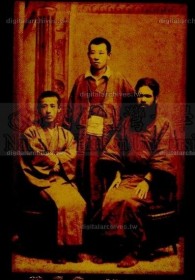 Ino Kanori (1867-1925) was an anthropologist from Iwate Prefecture, Japan. Under the strict tutelage of his grandfather, at a young age he had already learnt by heart the Four Books and Five Classics. Soon after arriving in Taiwan in 1895, he established the “Taiwan Society for Anthropology” with Tashiro Yasusada, who was working in the Department of Productive Industry at the time under the Governor-General of Taiwan (Taiwan Sotokufu), and began studying the Gaoshan (High Mountain) and Pingpu (Plains) Tribes. In 1897, he went to Lanyu to continue his research, where he met Torii Ryuzo. In his third year in Taiwan, Ino Kanori completed a 192-day investigation on the aborigines of Taiwan, encompassing their geography, transportation, industries, customs, languages, cultures, and their interactions with other residents of Taiwan. He presented the results in his text, Report on Aborigines in Taiwan. His new system for classifying Taiwanese aborigines included in this report was considered Ino Kanori’s most significant achievement. Discarding the traditional, rough categorization that divided the tribes into the more and less civilized, he instead devised eight groups, and further divided the Pingpu tribes into ten sub-tribes, laying the basis for all future studies and classification of Taiwanese aborigines.
Ino Kanori (1867-1925) was an anthropologist from Iwate Prefecture, Japan. Under the strict tutelage of his grandfather, at a young age he had already learnt by heart the Four Books and Five Classics. Soon after arriving in Taiwan in 1895, he established the “Taiwan Society for Anthropology” with Tashiro Yasusada, who was working in the Department of Productive Industry at the time under the Governor-General of Taiwan (Taiwan Sotokufu), and began studying the Gaoshan (High Mountain) and Pingpu (Plains) Tribes. In 1897, he went to Lanyu to continue his research, where he met Torii Ryuzo. In his third year in Taiwan, Ino Kanori completed a 192-day investigation on the aborigines of Taiwan, encompassing their geography, transportation, industries, customs, languages, cultures, and their interactions with other residents of Taiwan. He presented the results in his text, Report on Aborigines in Taiwan. His new system for classifying Taiwanese aborigines included in this report was considered Ino Kanori’s most significant achievement. Discarding the traditional, rough categorization that divided the tribes into the more and less civilized, he instead devised eight groups, and further divided the Pingpu tribes into ten sub-tribes, laying the basis for all future studies and classification of Taiwanese aborigines.
|
|
Read more...
|
|
Listen to the Voiceless Glory! |
|
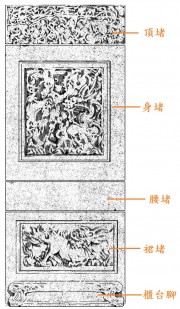
Evidence of such auspicious decorations can be seen at the Tainan City God Temple and the Lugang Longshan Temple (Lukang Lungshan Temple). The former features two decorative front walls serving as a medium through which supplications for good fortune are conveyed to Heaven. Upon entering the latter, one’s attention is caught by a series of stone posts running along the sides of the inner court beyond the arched gateway. The posts are adorned with eighteen luohan (arhats, Buddhist saints) and four children holding auspicious objects including a banner, ball, lance and chime. On the bottom surfaces one finds simple carved patterns which likewise bear auspicious connotations.
|
|
Read more...
|
|
Stones with Emotion ── Bringing the Beauty of Taiwan to the Global Stage |
|
 Going down the forest road in the mountains and through the old Niudong (lit. Ox Hole) tunnel, with the Yema River lying ahead, we wound along Country Road No. 69 in Yuchi Township before reaching Nei-Jia-Dao Highland, where there were several stone sculptures on the roadside, leading to the house of the famous naive artist Lin Yuan. Upon entering the gate, the first thing we saw were stone sculptures scattering the yard, which seemed to grow from the ground. There was a crisp scent of grass and wood in the air, and a globe on the side of the yard, making us wonder why such a device was kept outside. Lin Yuan’s grandson, Li Rihou recounted with a smile, “My grandfather made it to keep the visiting children from getting bored,” with hands fiddling with the globe, which glistened with sunshine when turning. From the other side of the yard, mixed-media pieces of art vying for my attention. Some of them smiled, some frowned; some were deep in thought, some carried on conversations. I thought I even saw one wink. Most were creations made of materials that could be obtained anywhere, which, after being put together, radiated an indescribable vitality.
Going down the forest road in the mountains and through the old Niudong (lit. Ox Hole) tunnel, with the Yema River lying ahead, we wound along Country Road No. 69 in Yuchi Township before reaching Nei-Jia-Dao Highland, where there were several stone sculptures on the roadside, leading to the house of the famous naive artist Lin Yuan. Upon entering the gate, the first thing we saw were stone sculptures scattering the yard, which seemed to grow from the ground. There was a crisp scent of grass and wood in the air, and a globe on the side of the yard, making us wonder why such a device was kept outside. Lin Yuan’s grandson, Li Rihou recounted with a smile, “My grandfather made it to keep the visiting children from getting bored,” with hands fiddling with the globe, which glistened with sunshine when turning. From the other side of the yard, mixed-media pieces of art vying for my attention. Some of them smiled, some frowned; some were deep in thought, some carried on conversations. I thought I even saw one wink. Most were creations made of materials that could be obtained anywhere, which, after being put together, radiated an indescribable vitality.
|
|
Read more...
|
|
The Cultural Significance of Snuff Bottles |
|
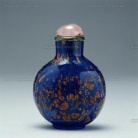 Snuff bottles were used by the Chinese to contain powdered tobacco. They can be traced back to the end of the Ming Dynasty and the beginning of the Qing Dynasty, when legates from Europe presented gifts to the Chinese court. After the introduction of snuff bottles into China, the Manchu people in Beijing, who placed a high premium on leisure and entertainment, made snuff-taking immensely popular, both for the court and the common people. Absorbing distinctively Asian elements, snuff bottles soon became fashionable in China. As the progeny of a consummate combination of innovative Western invention and ingenious Chinese craftsmanship, snuff bottles were, and still are, representative antiques that bear witness to the mixture of Asian and Western cultures in the Qing royal court. Since then, they have developed into a unique branch of Chinese art. Snuff bottles were treasured and appreciated at that time and even became symbols of fashion and social status. Snuff bottles were used by the Chinese to contain powdered tobacco. They can be traced back to the end of the Ming Dynasty and the beginning of the Qing Dynasty, when legates from Europe presented gifts to the Chinese court. After the introduction of snuff bottles into China, the Manchu people in Beijing, who placed a high premium on leisure and entertainment, made snuff-taking immensely popular, both for the court and the common people. Absorbing distinctively Asian elements, snuff bottles soon became fashionable in China. As the progeny of a consummate combination of innovative Western invention and ingenious Chinese craftsmanship, snuff bottles were, and still are, representative antiques that bear witness to the mixture of Asian and Western cultures in the Qing royal court. Since then, they have developed into a unique branch of Chinese art. Snuff bottles were treasured and appreciated at that time and even became symbols of fashion and social status.
|
|
Read more...
|
|
Delineating Appearances: Portrait Painting |
|
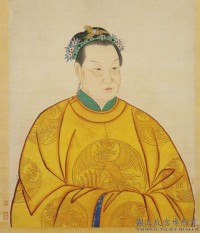 Gobulo Wanrong was born in a turbulent era. As the last empress of China during the Qing Dynasty, she was thrust upon the historical stage under shiny spotlights. By now, however, the curtain has long risen and fallen, and what remains of Empress Wanrong are just some accounts of the vicissitudes of her life and a few pictures. Nowadays, we can sketch out her life based on the images of her catalogued in the NBINet. But how did people record the appearance of a person before photography was introduced to the East?
Gobulo Wanrong was born in a turbulent era. As the last empress of China during the Qing Dynasty, she was thrust upon the historical stage under shiny spotlights. By now, however, the curtain has long risen and fallen, and what remains of Empress Wanrong are just some accounts of the vicissitudes of her life and a few pictures. Nowadays, we can sketch out her life based on the images of her catalogued in the NBINet. But how did people record the appearance of a person before photography was introduced to the East?
|
|
Read more...
|
|
|
Chi Mei Museum Violin Collection |
|
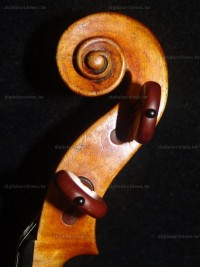 Taiwanese violin authority Lee Shude just celebrated her eightieth birthday in the National Concert Hall. Her students, including world-renowned solo virtuosos Lin Zhaoliang, Hu Naiyuan, and a group of budding young violinists gathered together to celebrate the birthday of this living national treasure. Four hundred years ago, no one in Taiwan could have imagined that all the way across the world, in Italy, luthiers were crafting musical instruments that would one day arrive in Taiwan and create such beautiful music.
Taiwanese violin authority Lee Shude just celebrated her eightieth birthday in the National Concert Hall. Her students, including world-renowned solo virtuosos Lin Zhaoliang, Hu Naiyuan, and a group of budding young violinists gathered together to celebrate the birthday of this living national treasure. Four hundred years ago, no one in Taiwan could have imagined that all the way across the world, in Italy, luthiers were crafting musical instruments that would one day arrive in Taiwan and create such beautiful music.
|
|
Read more...
|
|
|
<< Start < Prev 1 2 3 4 5 6 7 8 9 10 Next > End >>
|
|
Page 1 of 13 |